-
News & Events

From June 24th to 28th, Dr. Schnake, Head of Center for Spinal and Scoliosis Therapy, Malteser Waldkrankenhaus St. Marien, Erlangen, Germany and President-elect of the German Spine Society (DWG) 2026, visited the Shenzhen Second People's Hospital as an international visiting professor, and carried out a series of academic exchange activities in the hospital, including ward rounds, surgical guidance, surgical practice, internal lectures for training, discussions on department management and complex cases, and public lecture, etc.
Highlights
Unveiling Ceremony of Sino-German Communication Center for Spine Surgery
On June 24th, Party Secretary ZENG Hui, Vice President YANG Lei, Director of Dept. Of Spine Surgery Prof. YAN Bin, the spine surgery team and other medical staff of Shenzhen Second People's Hospital attended the welcome ceremony, and jointly held the unveiling ceremony for the "Sino-German Communication Center for Spine Surgery”.

During the welcoming ceremony, Dr. Schnake introduced that there are four types of hospitals in Germany, i.e. university hospitals, municipal hospitals, church hospitals and private hospitals. The Malteser Waldkrankenhaus St. Marien, which he works for, is a church hospital. It was built by the Franciscan sisters in 1959, and was taken over by the Malteser, which is one of the largest charitable service providers in Germany, in 2017, and has become a mainstay of medical care for Erlangen, Nuremberg, and its surroundings.
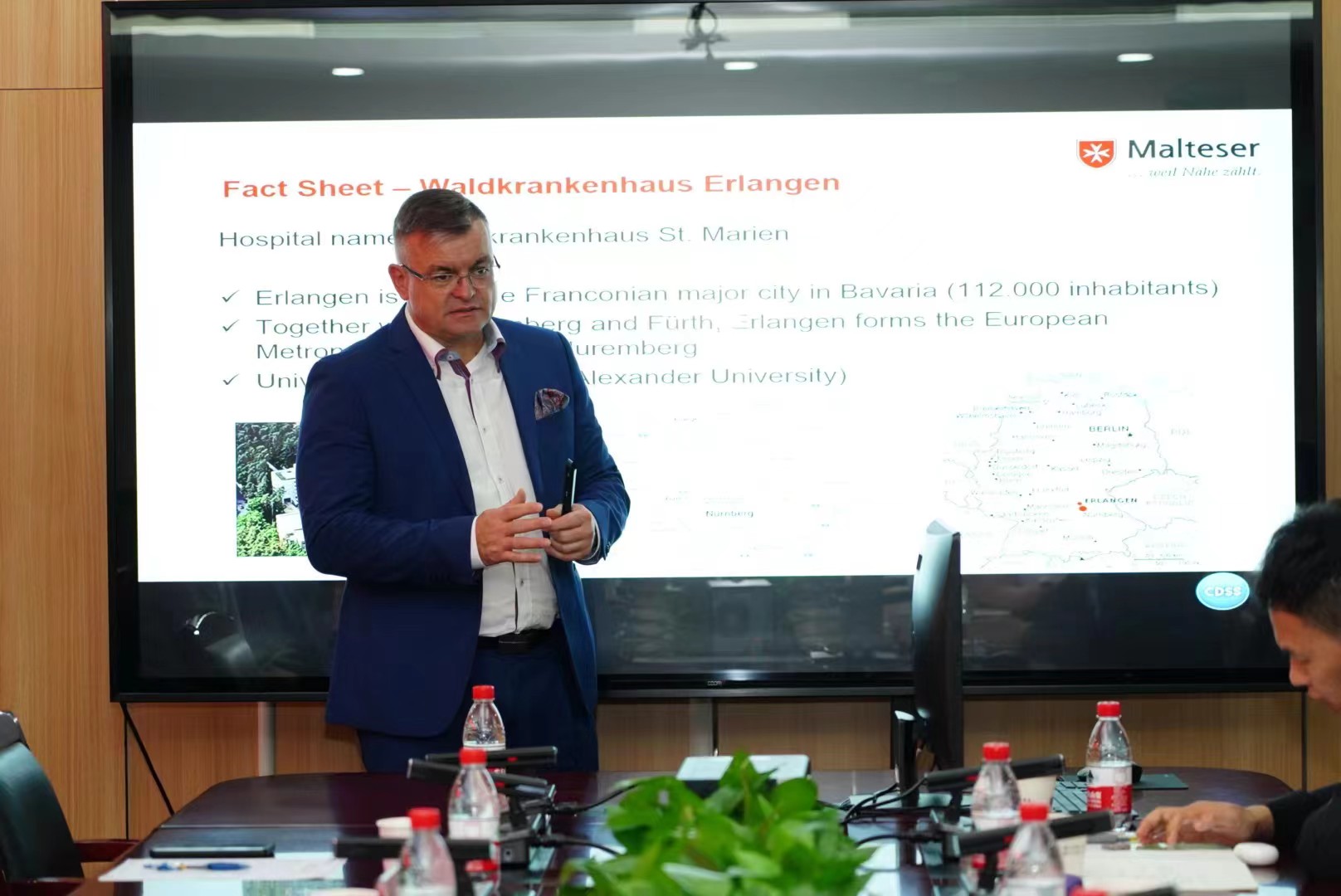
Due to the Interdisciplinary Center for Spinal and Scoliosis Therapy, the hospital is awarded as the Top national German hospital for spine surgery by the German FOCUS magazine. The center has seven senior surgeons, and has around 1,200 cases of surgery every year and covers a wide treatment spectrum, like spinal degenerative diseases, trauma (especially geriatric fractures), spinal deformities (scoliosis) in children, adolescents, and adults, infections, tumors, and conservative treatments. The department is equipped with modern medical equipment such as robots, navigation, endoscopes, neuromonitoring systems and so on.
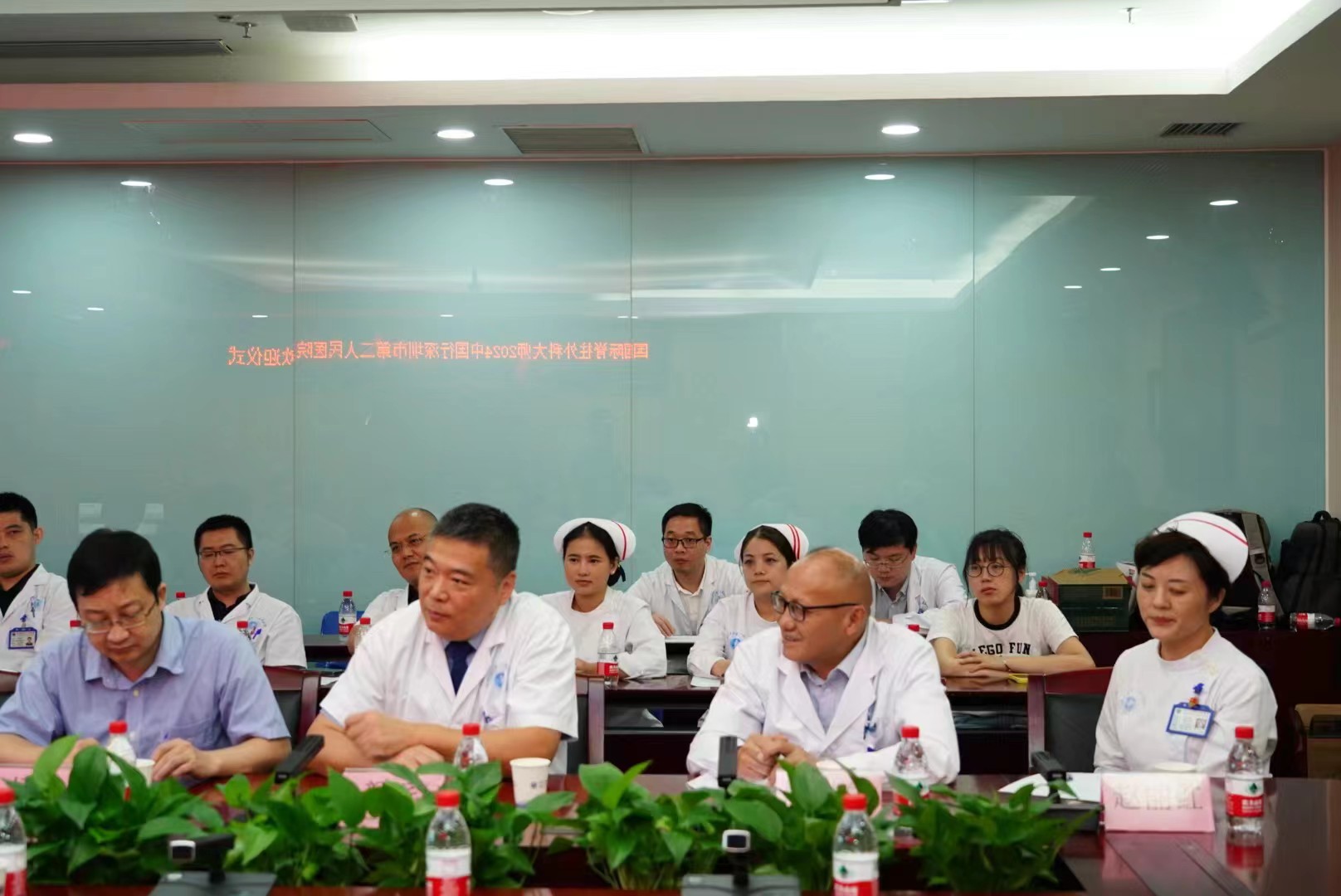
Director YAN Bin introduced that the Department of Spine Surgery of Shenzhen Second People's Hospital was established in 1997, which is the first spine surgery department in Shenzhen city. The department has 17 doctors, with an annual operation volume of about 1,500, focusing on deformities (scoliosis), tumors, infections, complex cervical spine, minimally invasive spine surgeries as well as pain management in the spine. The spine departments from both sides are very similar in terms of personnel structure, operation volume, and treatment spectrum, which makes the exchanges in the following week more targeted, and we are looking forward to the sharing and gains from both sides.
Participation in the Ward Round
On the morning of June 25th, Dr. Schnake, together with Director YAN Bin and his team, first discussed the treatment plan for the recently admitted patients and participated in the ward round in the whole department. The attending doctors who were in charge of the inpatients reported to Dr. Schnake one by one on the inpatients' conditions. For patients with complicated conditions, Dr. Schnake carefully examined them, checked the images and provided detailed suggestions for treatment.

After the ward round, the young surgeons from the spine department reported two difficult cases of spinal infection and spinal cervical spondylosis. During the discussion session, Dr. Schnake shared his experience in treating spinal infections and emphasized that thorough debridement is very crucial.
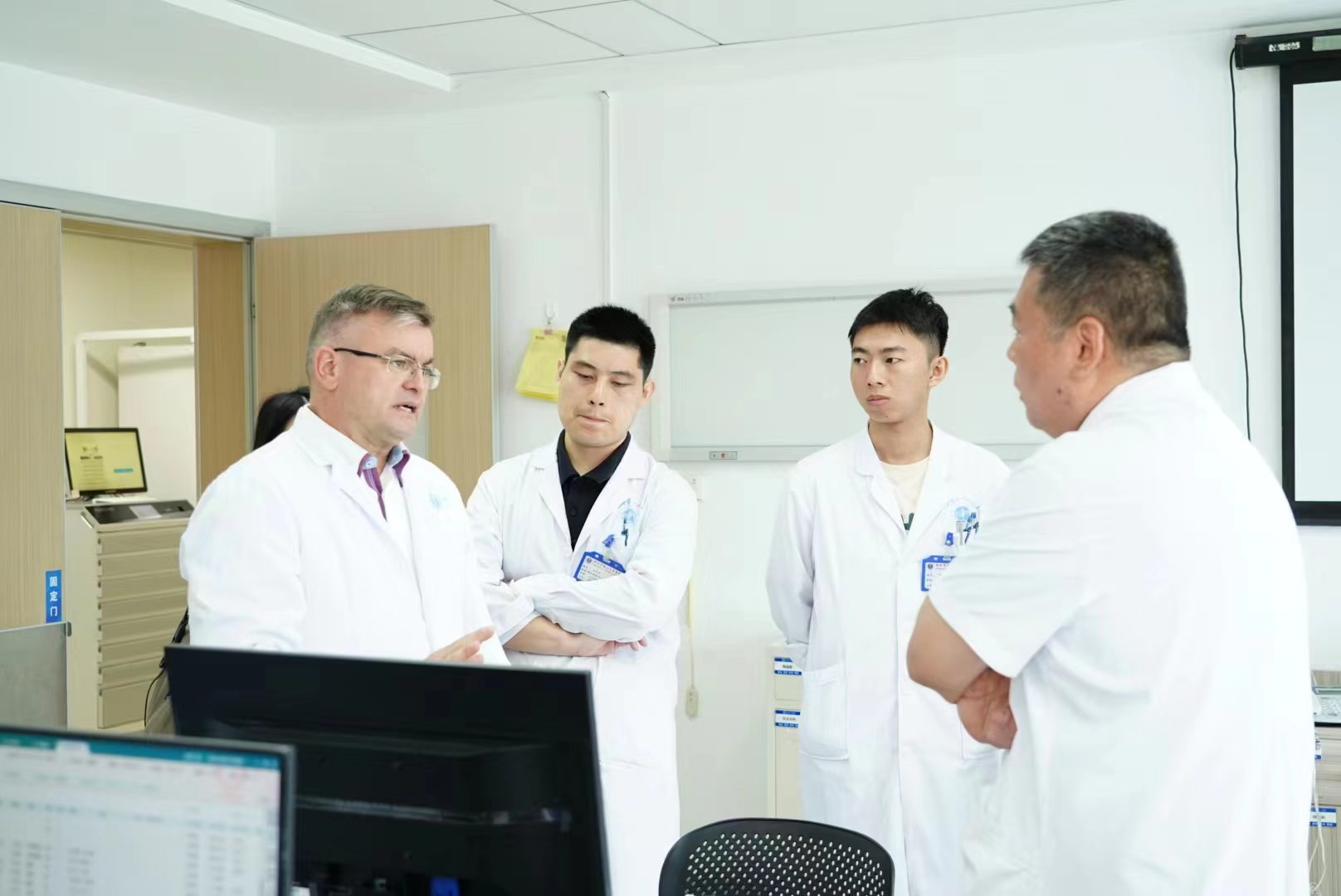
Internal Lecture of Spine Surgery
On the afternoon of June 25th, Dr. Schnake gave two lectures in the Department of Spine Surgery, the topics of which were "Progress in the Treatment of Osteoporotic Thoracolumbar Fractures" and "Progress in Anterior Lumbar Interbody Fusion".
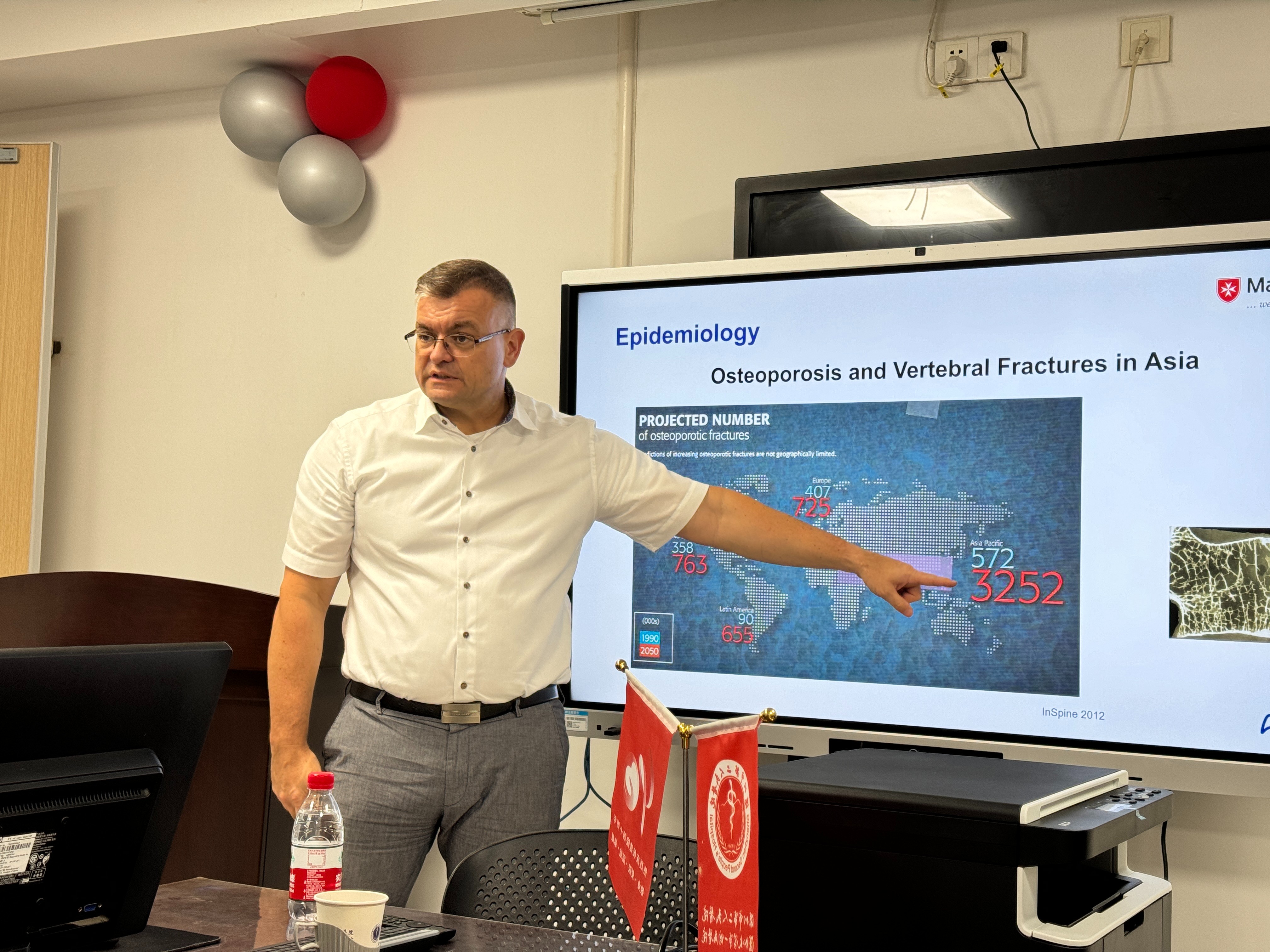
In the first lecture, he introduced the epidemiology of osteoporotic fractures, sharing that the aging of the population will become more and more serious in the future, and that around 17% of the world's population will be 65 years old or older by 2025, which will lead to an increasing number of patients with osteoporotic fractures.

He then introduced the Osteoporotic Fracture Classification System(OF classification) and the Score for therapeutic decision making in Osteoporotic Vertrebral Fractures(OF Score), which were jointly proposed by the AO Spine Knowledge Forum Trauma and the Osteoporotic Fracture working group, Spine Section of the German Orthopaedics and Trauma Society (DGOU), to provide scientific guidance for spine surgeons in classifying and treating patients with osteoporotic thoracolumbar fractures. The relevant literature has been published in the Global Spine Journal, and he suggested that if interested, Chinese doctors can search them online.
He shared that the OF classification and OF score system are already routinely used in clinical practice in Germany and other German-speaking countries, and that 20 medical institutions around the world are now participating in a multicenter study to further evaluate them, with the goal of promoting them globally in the future.
In the second lecture, Dr. Schnake introduced the ALIF procedure in details, from indications for the procedure, the preoperative considerations, to every surgical step of the procedure (patient position, marking, incision, anterior anatomy, cage placement, and suturing). During the lecture, he also showed the intraoperative ALIF surgery at L4/5 and L5/S1, so that the doctors could learned the anterior approach more directly and clearly.
Surgical Observation
On the morning of June 26th, Dr. Schnake observed two lumbar UBE surgeries and one posterior cervical single door laminoplasty. After the surgeries, Dr. Schnake said that OPLL is not common in Europe, so they seldom perform posterior cervical laminoplasty. He was very lucky to be able to observe this kind of operation during this visit, which was very rewarding.
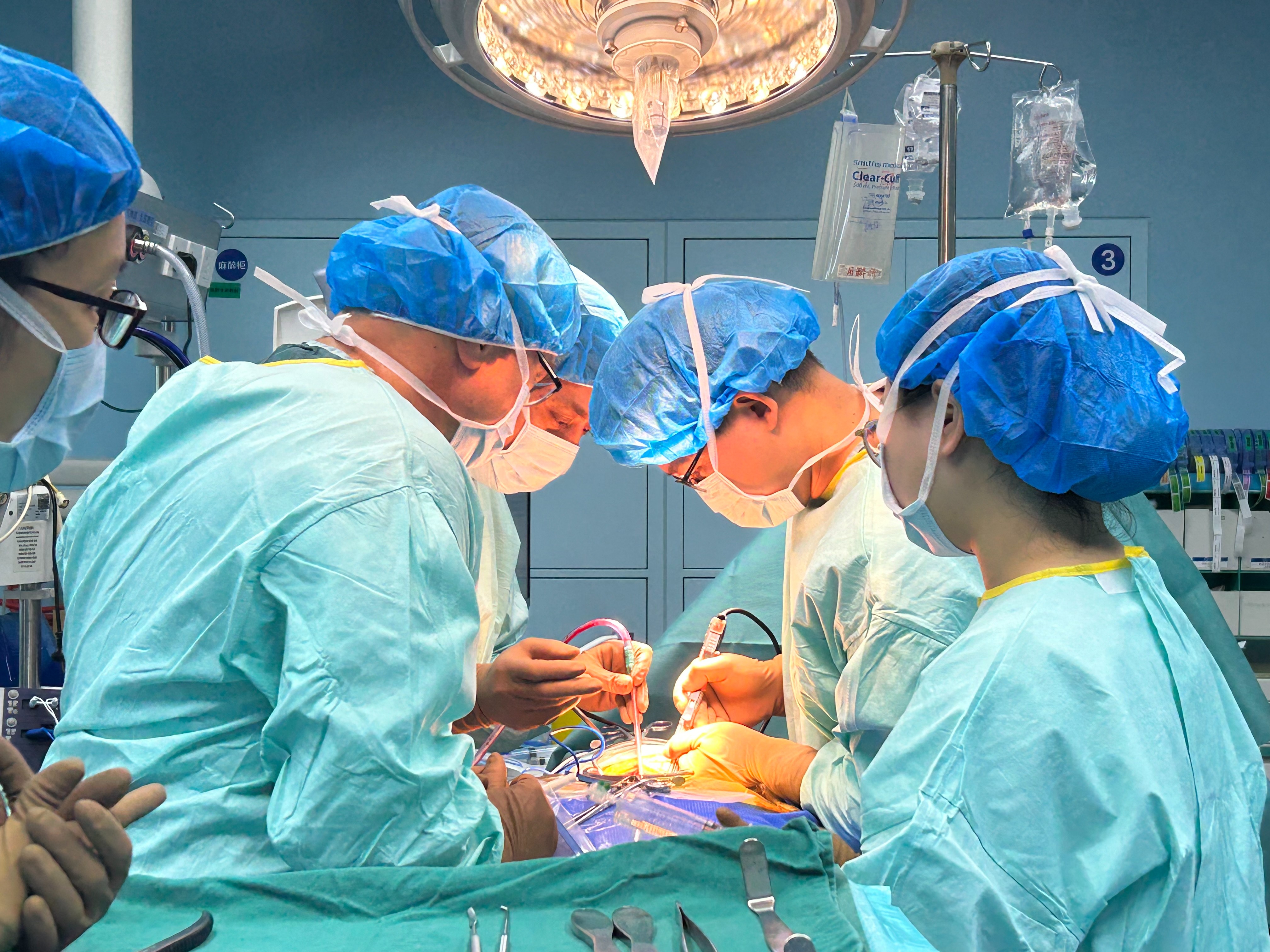
Complex Cases Sharing and Departmental Management Training
In the afternoon of June 26th, the Department of Spine Surgery held an internal lecture program full of useful information, in which Dr. Schnake shared three lectures with topics of robotic spine surgery, complex cases of adult spinal deformity, and spine department management and talent training.
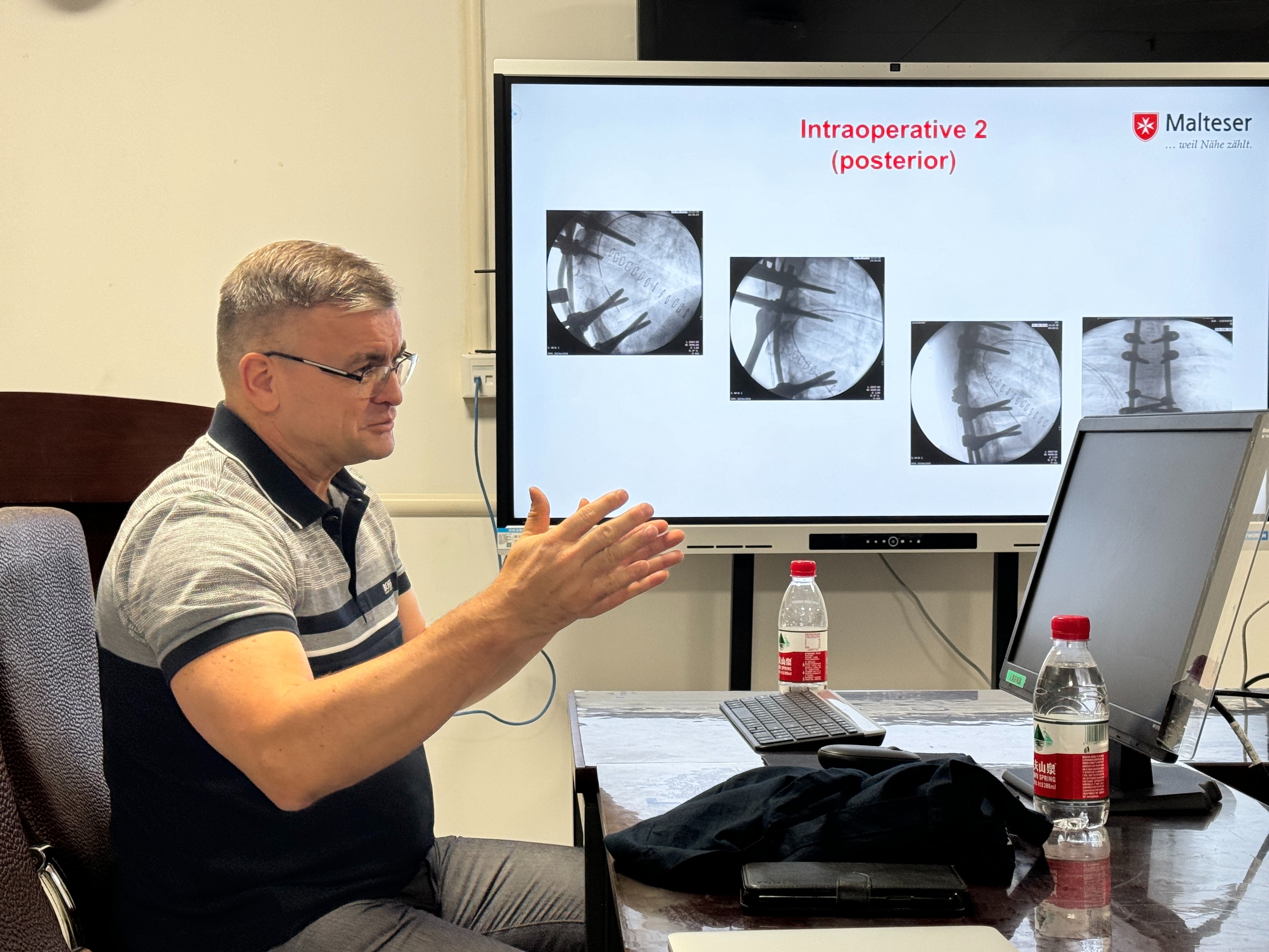
In the first lecture, Dr. Schnake introduced in detail the use of robotic system in spine surgery by sharing the past cases of robotic spine surgery performed in his department. He said that robotic spine surgery has many advantages, such as the exact execution of planned screw trajectories, ensuring less failed or suboptimal inserted screws, allowing less experienced surgeons to perform screw insertion, and making the surgeries easier and more relaxed for the surgeons, etc. Dr. Schnake’s department has been carrying out this technique since 2021 and is now the Mazor Robotics European Reference Center. As many robotic spine surgeries are performed in his department, doctors from Europe and other countries often visit his department to learn robotic spine surgery.
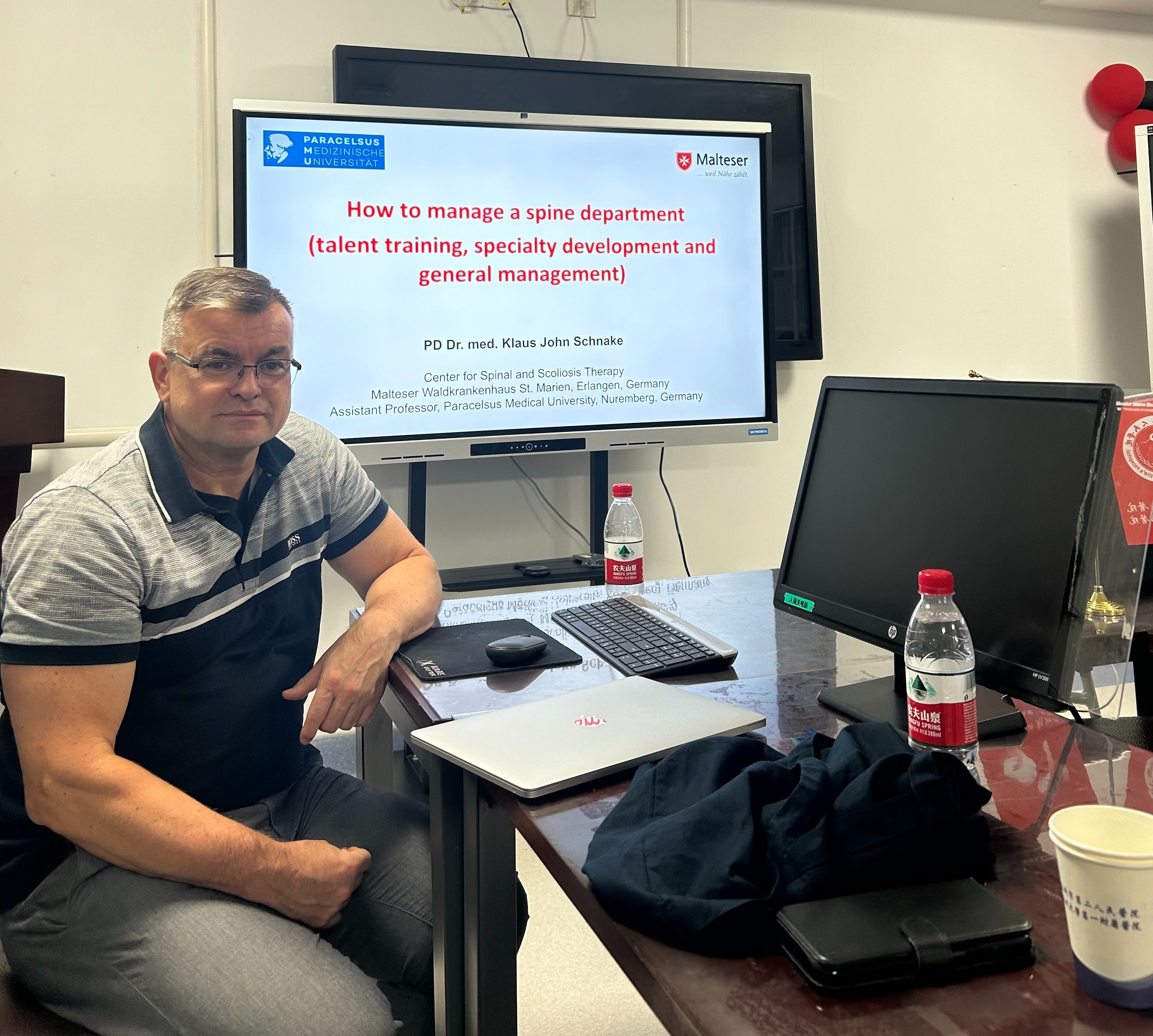
Then in the case discussion session, Dr. Schnake shared two special cases, one is with a combined coronal and sagittal adult deformity and the other is with post-traumatic kyphosis and has a history of 7 surgeries before, demonstrating his department's extensive experience in treating adult scoliosis. He shared, "Preoperative planning is very important in such complex cases and requires the planning in every surgical step."
In the last lecture, Dr. Schnake shared his experience in spine department management and talent training. He shared that every member of the team should communicate clearly and respectfully, and should have a sense of morality as a doctor and be aware of your position as role model; decisions in the team should be explained and transparent; feedback should be given timely, both constructive and empowering. He also shared that doctor is a profession that requires lifelong learning, and that learning by doing is not enough, especially for young doctors, so he encourages them to continue to learn new knowledge and grow through a variety of ways, such as taking online courses, joining national or international societies, and visiting different hospitals for further training.
Surgical Guidance and Experience Sharing
On the morning of June 27th, Dr. Schnake came to the operating room of the hospital. The day before the surgery, Dr. Schnake checked the images and discussed the surgical plan with Director YAN Bin and the doctors who will join the surgery. After arriving at the operating room, Dr. Schnake reviewed the patient's images, checked the instruments needed for the surgery and the patient's position.
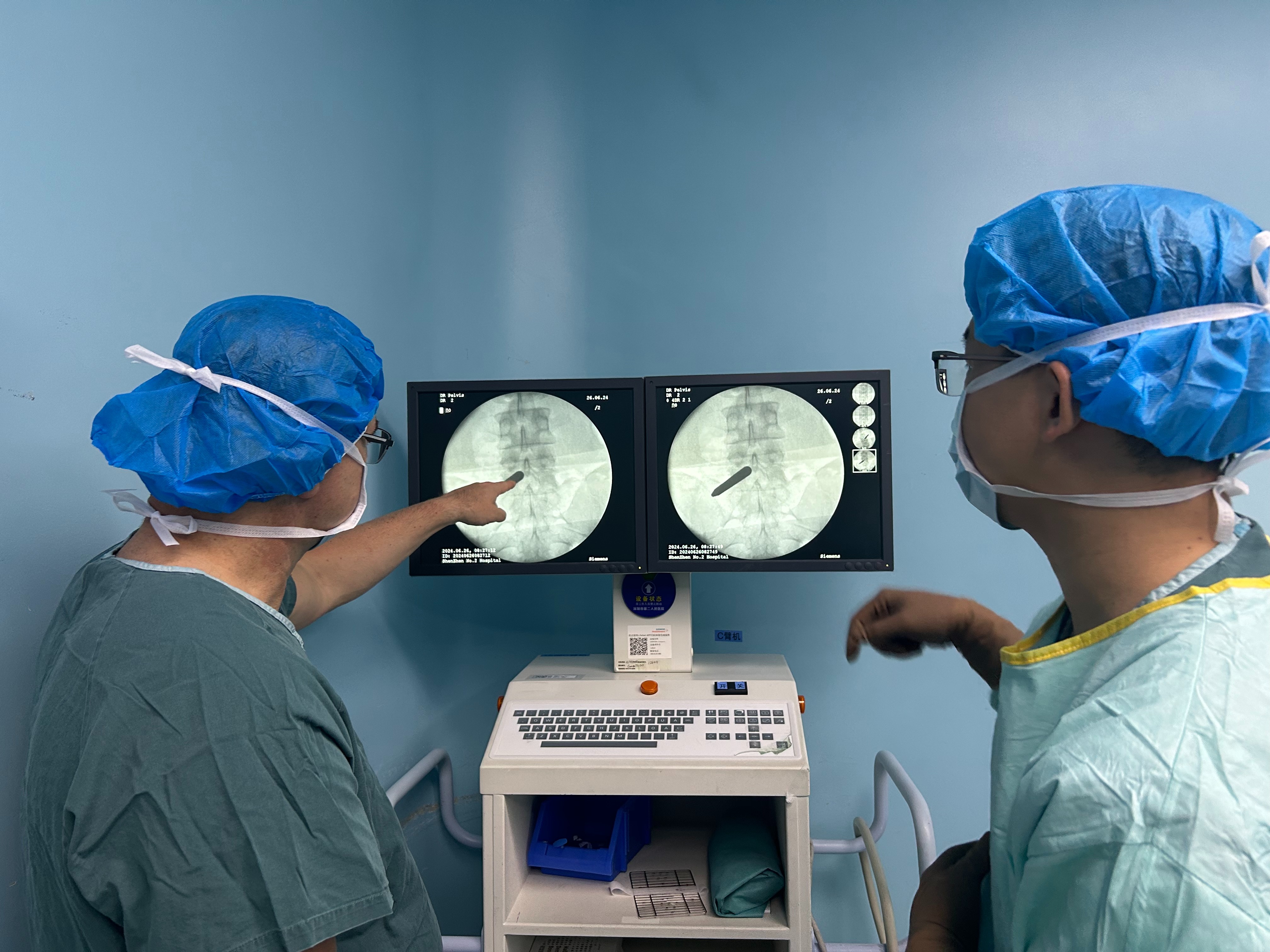
Then, Dr. Schnake, Director YAN Bin and his team performed a two-level ACDF surgery under the microscope. The surgery went smoothly and Dr. Schnake provided practical guidance on the use of the microscope, the removal of osteophyte, the range of decompression, and the implantation of the cage during the surgery.

After the surgery, Dr. Schnake and Director YAN Bin had a close discussion about the key steps in the surgery and how to deal with the post-op complication of cerebrospinal fluid(CSF) leakage. Dr. Schnake shared that if a patient is found to have a CSF leakage, they will firstly observe the patient to see if the patient shows any clinical symptoms, like headache, nausea, and then if the patient doesn't have any symptom after 2-3 days of observation, the patient doesn't need to be treated for the leakage, otherwise, the patient needs to be operated for dural repair immediately. In particular, Dr. Schnake mentioned that they often use a TachoSil Fibrin Sealant Patch to repair the dura. Depending on the size of the opening, combined with suturing and the use of a single-layered patch or double-layered patches(sandwich-like, one inside and one outside the dura) to deal with CSF leakage. Director YAN Bin said that they all learned a lot from Dr. Schnake's surgical demonstration today, and that they would record the whole surgical process for other doctors in the department to learn the key surgical steps in today’s surgery.
Sino-German Exchange and Shenzhen Spine Surgery Seminar on Diversified Treatment of Low Back Pain
On the morning of June 28th, Dr. Schnake arrived at the department office and first had case discussions with the spine surgery team. Afterwards, Dr. Schnake and Director YAN Bin saw the patients together. One of the patients was a boy who came to Shenzhen from Hong Kong together with his mother for treatment. The boy has congenital cervical scoliosis.

Dr. Schnake checked the radiographs in detail and discussed the preliminary diagnosis and surgical plan with Director YAN Bin. Due to the complexity of the case, Director Yan will discuss with the cervical spine team of the Peking University Third Hospital about the follow-up treatment plan.
After the discussion, Dr. Schnake went to the operating room and completed a posterior lumbar cement augmented screw fixation with the spine surgery team.
In the afternoon, "Sino-German Exchange and Shenzhen Spine Surgery Seminar on Diversified Treatment of Low Back Pain" was successfully held in Shenzhen Second People's Hospital, with the participation of spine specialists from many hospitals in Shenzhen, where Dr. Schnake shared his lecture on "Selection of Fusion Level for Degenerative Scoliosis", and had a heated discussion with Chinese colleagues.

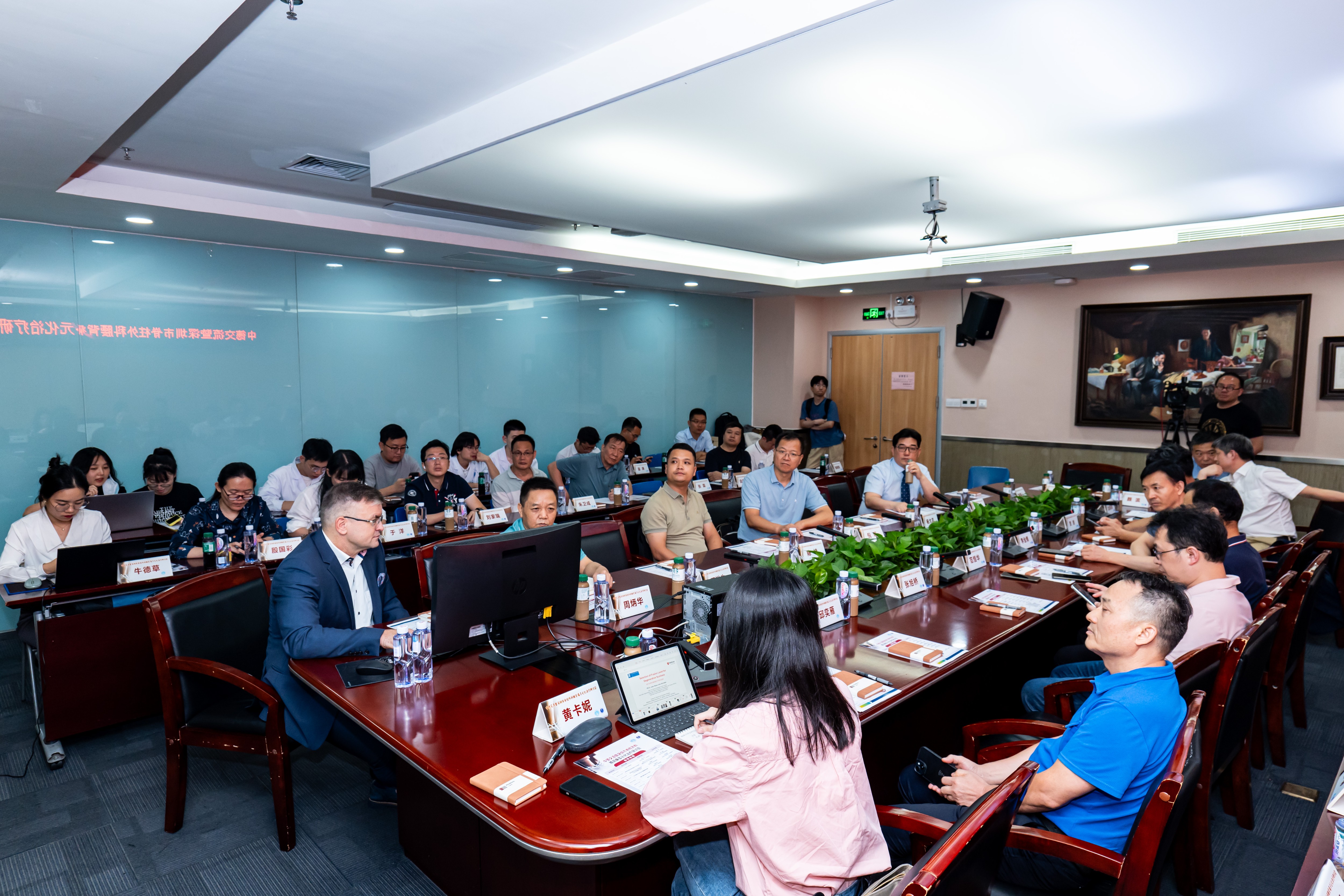
Good time always passes quickly. Dr. Schnake's visit to Shenzhen Second People's Hospital came to an end. While departing, Dr. Schnake and Director YAN Bin said goodbye to each other at the door, Dr. Schnake said that he looks forward to visiting Shenzhen Second People's Hospital again in the future and to have more exchanges with Director Yan and his team.

